

Josh Nevett
CarExpert's top five large SUV reviews of 2025
2 Days Ago
The Honda CR-V is a sensible, practical mid-sized SUV. Does the addition of two extra seats improve the formula?
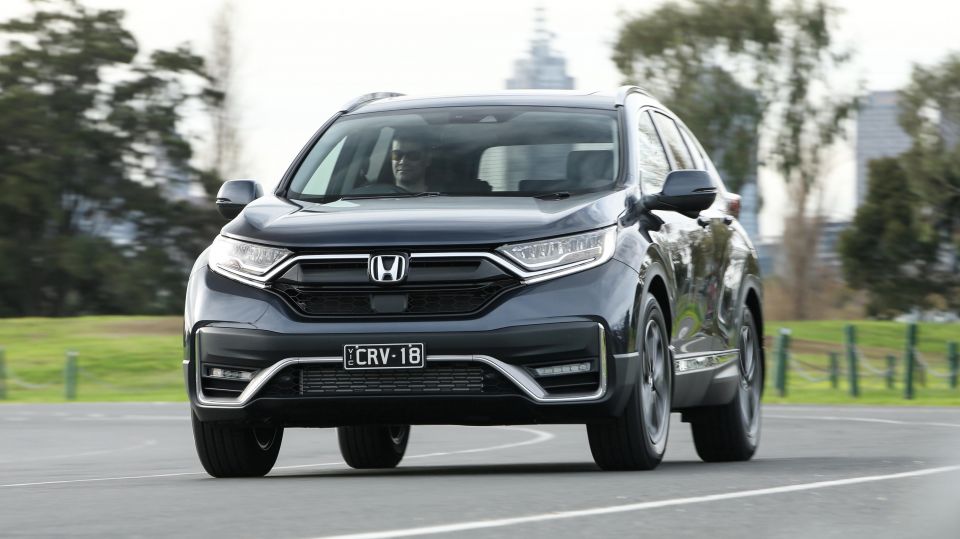
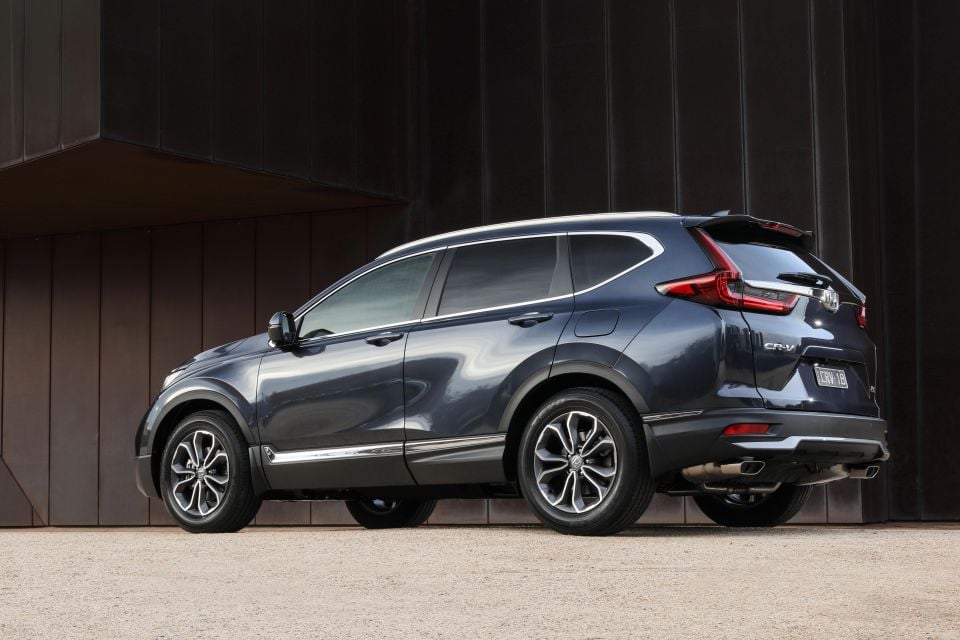

Contributor
New from
$36,378
excl. on-roads

Contributor
New from
$36,378
excl. on-roads


Contributor
New from
$36,378
excl. on-roads

Contributor
New from
$36,378
excl. on-roads
Quickly see how this car stacks up against its competition. Select any benchmark to see more details.
Where expert car reviews meet expert car buying – CarExpert gives you trusted advice, personalised service and real savings on your next new car.
Keeping up with the Joneses is no longer about which Commodore or Falcon is parked in your driveway, it’s about which mid-sized crossover you’ve bought.
The good news for Honda? The CR-V is part of the SUV old guard. It was one of the first high-riding family wagons to hit the market in the mid-1990s, and has since become a stalwart alongside the Toyota RAV4 and Subaru Forester.
It’s not hitting stratospheric highs on the sales charts at the moment, but that’s not for a lack of trying. Honda gave the CR-V a mid-life update in the middle of 2020, with mildly massaged looks and a longer list of standard equipment.
Honda has also recently updated its drive-away pricing for the CR-V in Australia as part of its shift to an agency sales model. The car on test here sits near the top of the range, with goodies like wireless phone charging and a panoramic sunroof to justify its near-$50,000 price.
It’s also somewhat unique in offering seven seats in a mid-ish-sized SUV body; only the Mitsubishi Outlander and Nissan X-Trail give buyers the same option.
Does the CR-V deserve more love from Australian buyers? And does the most expensive seven-seater in the range pack enough luxury to justify its sticker price?

The 2022 Honda CR-V VTi L7 is the second-most expensive model in the CR-V range, with a drive-away price of $48,700. Honda has done away with recommended retail prices, and instead now has nationwide drive-away pricing across its range as part of what it calls its Price Promise.
Only the CR-V VTi LX AWD is more expensive at $53,200 drive-away, while the VTi L AWD costs $45,500 drive-away.
The cheapest CR-V is the Vi, priced at $35,300 drive-away, while the cheapest seven-seater is the CR-V VTi 7 priced at $40,300 drive-away.
Based on price, the CR-V VTi L7 on test here goes head-to-head with the Toyota RAV4 Cruiser 2WD Hybrid ($48,002 drive-away, according to the Toyota Australia website) and the Subaru Forester Hybrid L ($46,233 drive-away, according to Subaru Australia website).
If you demand seven seats, the CR-V matches up roughly with the Mitsubishi Outlander Aspire AWD ($43,990 before on-road costs). The Nissan X-Trail doesn’t really have an equivalent, its only seven-seat option sits at the bottom of the range.
Finally, the larger Hyundai Santa Fe 3.5 FWD is priced around $49,000 drive-away. It’s less luxurious than the top-end CR-V, but is also a larger car with a more usable third row.
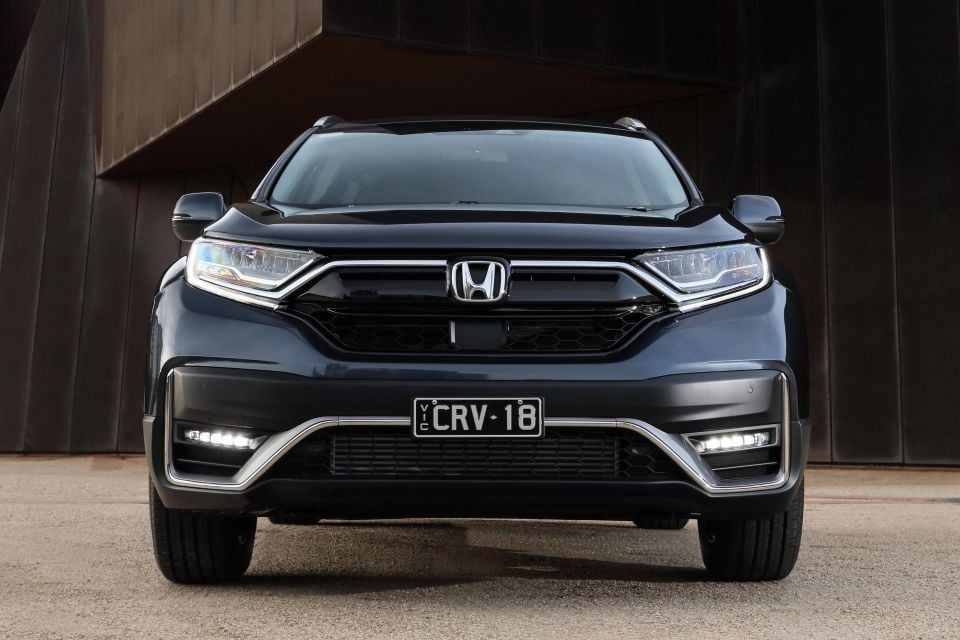
Buy your new car without the stress. It's fast, simple and completely free.

Great service from Travis and team, second time I have used this business would not hesitate to recommend them to anyone
Craig C.
Purchased a Ford Ranger in Sunshine Coast, QLD
CarExpert helped Craig save thousands on his Ford Ranger, now let us save you on your next new car.
Find a dealCR-V VTi L7 highlights:
That’s on top of equipment standard on lower grades, including:
The CR-V has a five-star safety rating from ANCAP, on the back of testing conducted in 2017.
It scored 14.76 out of 16 for the frontal offset test, 16 out of 16 for the side impact test, and two out of two for the pole test, for a total score of 35.76 out of 37.
Our VTi L AWD tester comes with a full suite of active safety assists, including autonomous emergency braking, lane departure warning, lane-keep assist, road departure mitigation, and adaptive cruise control.
It also features the LaneWatch camera which, when you indicate left, projects an image from under the left-hand mirror on the infotainment display in place of a conventional blind-spot monitoring system.
Honda argues it’s less ambiguous than blind-spot monitoring indicators because it shows up to 50m behind the car and up to two lanes across, but it would still be improved by the addition of a conventional blind-spot light.
The ability to clearly make out cyclists and the complete picture it offers of your surroundings is undoubtedly a positive, but it can be tricky to make out cars at night, where headlights can dazzle the camera.

Close to five years on from launch the Honda CR-V remains one of the most practical mid-sized SUVs on the market.
With a super low loading lip for the boot, doors that open to 90 degrees, great all-round visibility, and acres of storage up front, it’s dead easy to load, unload, and live with. It’s not a high-tech showpiece, but it does feel hard-wearing.
The driver and passenger sit high in well-stuffed, leather-trimmed seats with plenty of adjustment. The compact wheel looks and feels like a quality item, and even tall drivers will be able to get comfortable – while short drivers shouldn’t struggle to see out over the square-edged bonnet.
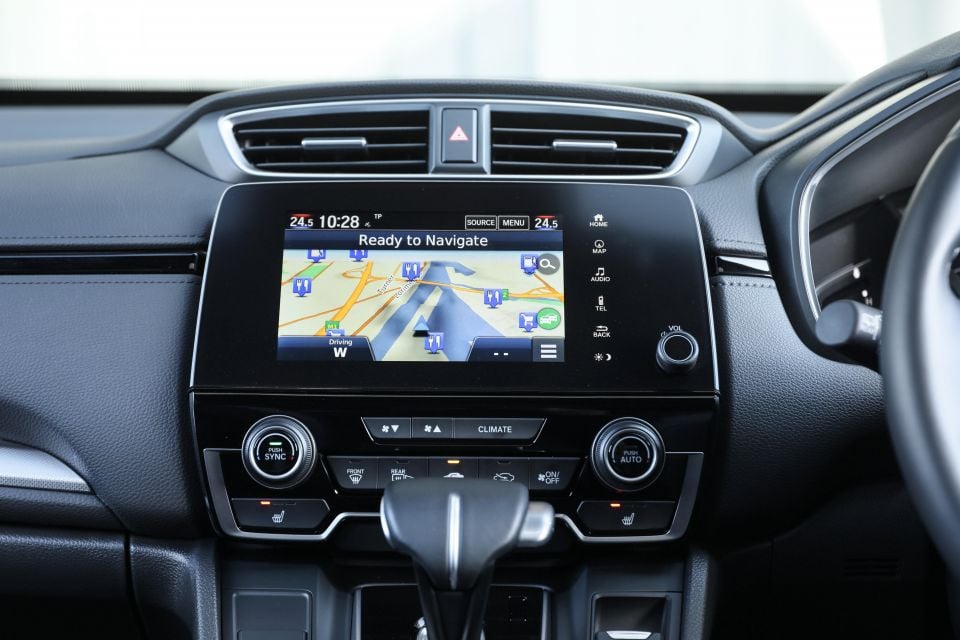
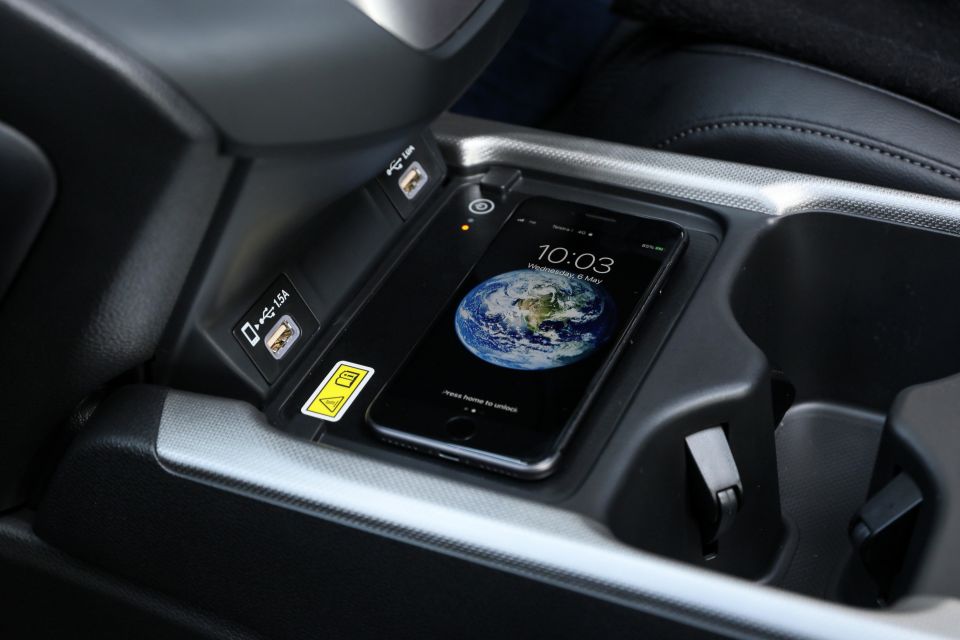
Sitting in the middle of the dashboard is a 7.0-inch infotainment screen that’s full-featured, but feels old alongside the widescreen displays becoming common in the segment. The system is a step up on the aftermarket-looking unit from the smaller HR-V, but the graphics are basic and the responses slow.
It misses out on digital radio, something reserved for the five-seat VTi LX AWD, and the factory navigation isn’t the last word in sophistication. The good news is, Honda gives you shortcut buttons and a proper volume knob.
Wired smartphone mirroring is the obvious solution, and allows you to more easily access media and mapping. Given the wireless charging pad wouldn’t play nice with my iPhone 13 Pro Max, losing connection as the car accelerates or brakes, plugging in for Apple CarPlay isn’t the worst thing in the world.
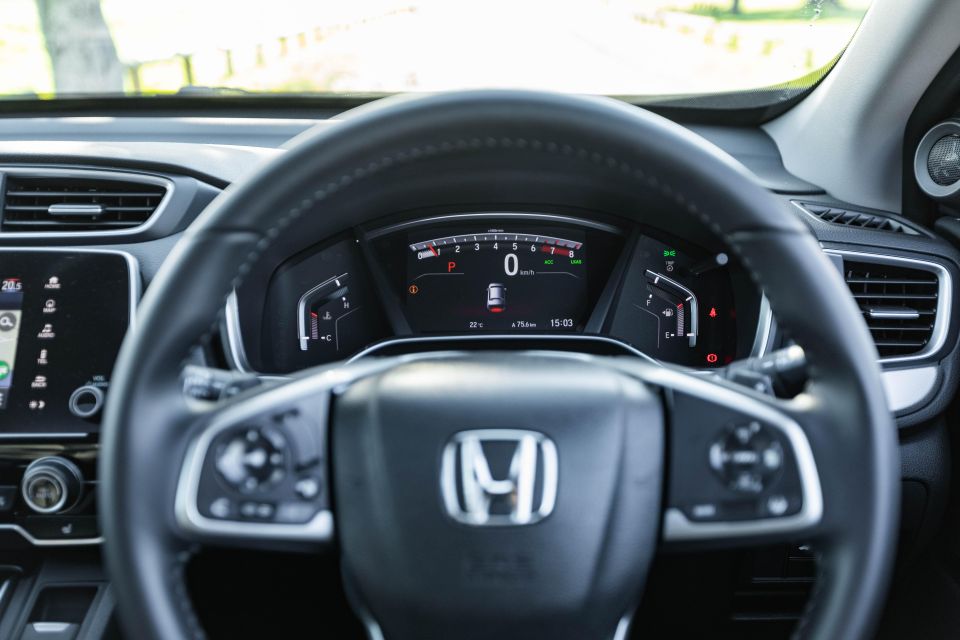
The driver is faced with a clear, simple digital instrument cluster with a retro bar-style rev counter. Flanking it are two funky-looking gauges for engine temperature and fuel.
It’s clear and easy to read on the move, and throws back to Hondas of yore like the S2000 with its bar-style rev-counter – not that you’ll spend all that much time chasing the redline here.
The amount of storage Honda has managed to fit into the CR-V’s body is impressive. The centre console is home to a massive bin (big enough for a handbag or laptop), and the sliding cover is actually an L-shaped tray for your wallet or phone. It’s a clever touch none of its rivals can match.
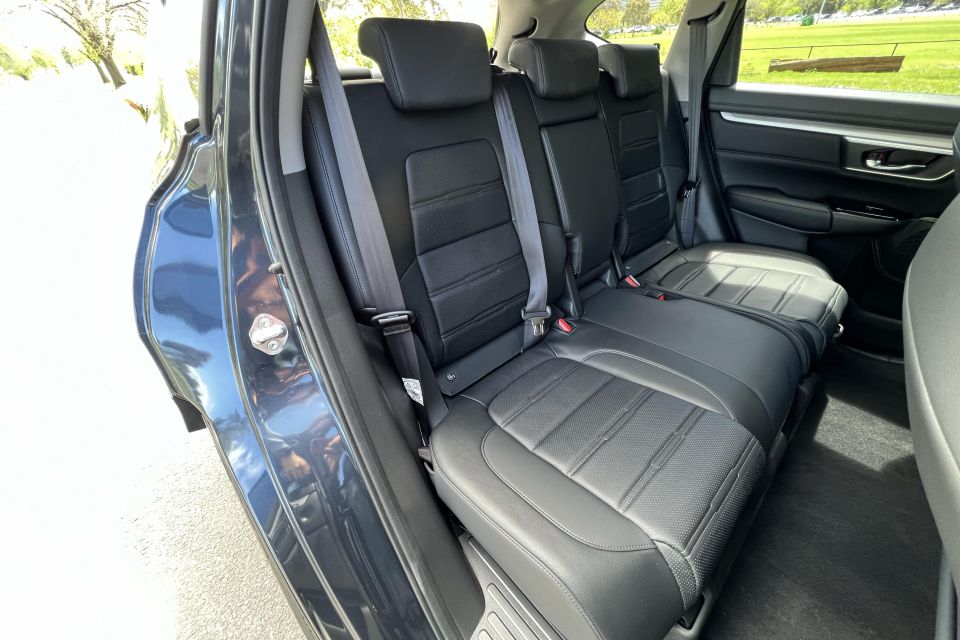
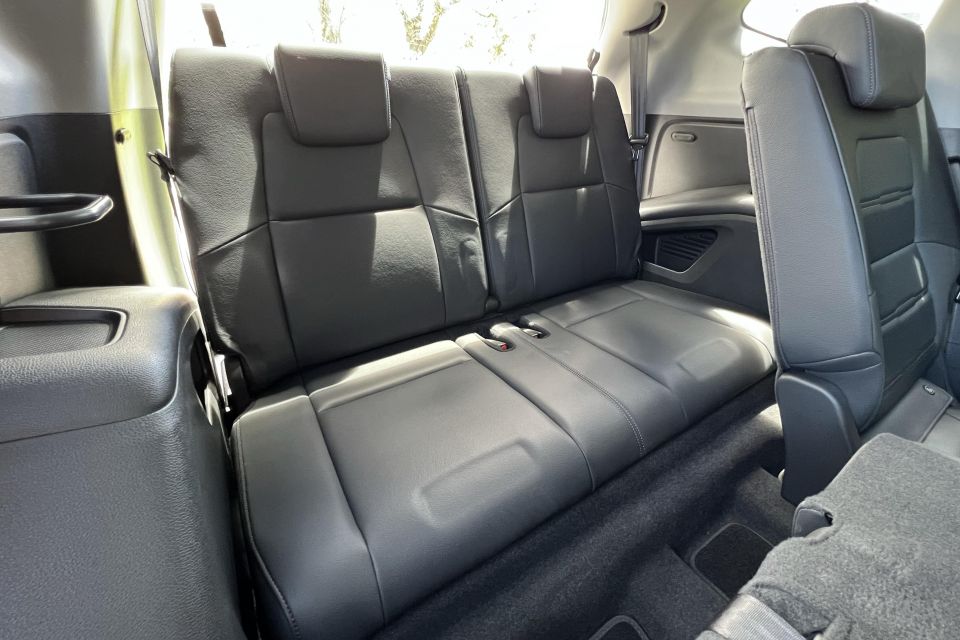
Access to the rear seats comes courtesy of big doors that open to 90 degrees, making it easier to load in child seats. Legroom is very impressive, but headroom is hit hard by the addition of a sunroof. Tall passengers will need to angle their heads, something you don’t need to do in the non-sunroof-equipped model.
There are two USB ports on the back of the transmission tunnel, along with air vents. The rear seats can be slid back and forward or reclined/made more upright to free up more boot space or third-row legroom, which is a nice touch.
With large windows and high-set rear seats, small children should have no trouble seeing out, and the cabin feels light and airy. It’s clear the CR-V was designed with families in mind. There are two ISOFIX and two top-tether mounts for child seats.
The third row is tight, even with the second row slid forward. There are air vents in the roof and decent windows back there, both of which are good things, but legroom and toe-room is very limited. It’s a space for kids only, and is better suited to occasional use.
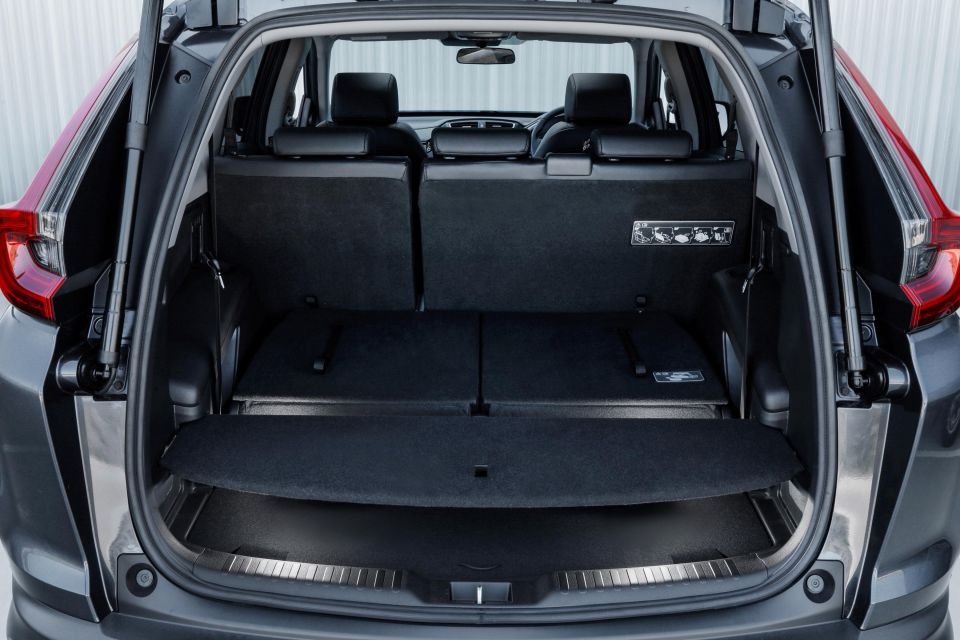
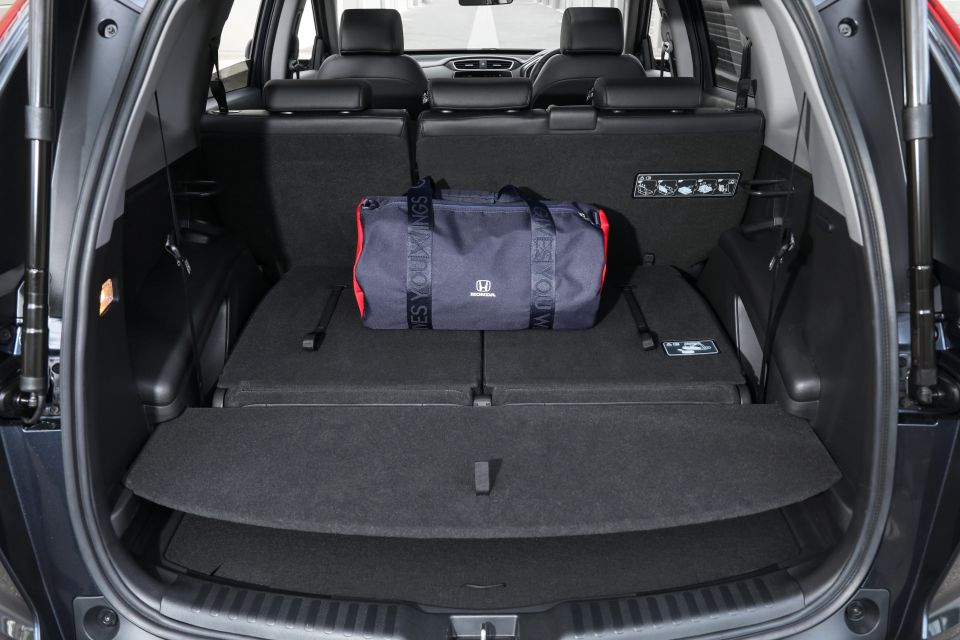

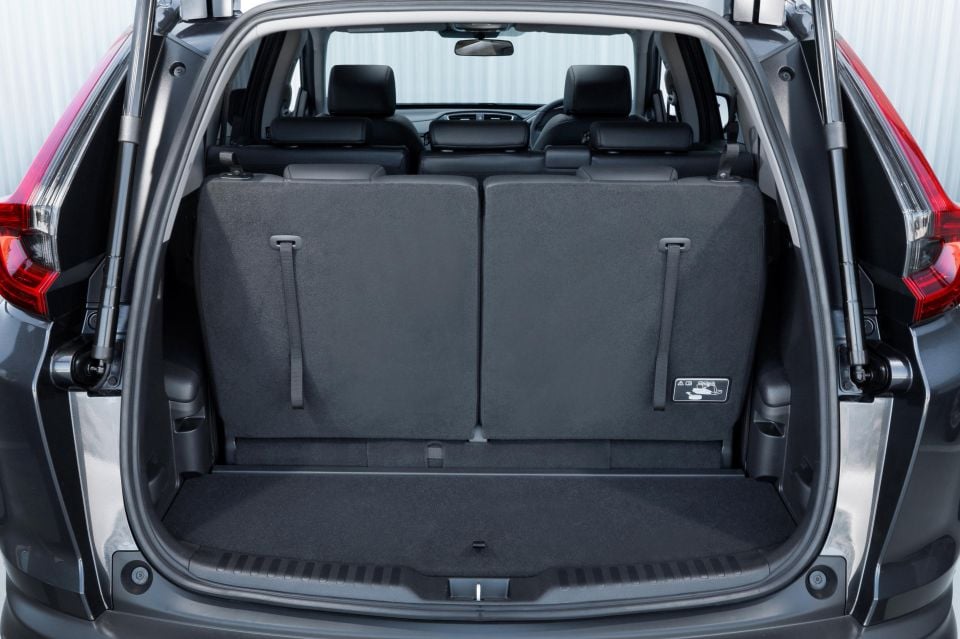
Then again, that shouldn’t come as a surprise. The appeal of a seven-seat mid-sized SUV is that it gives owners a few more options without sacrificing the city-friendly dimensions that makes the body style so popular, and the CR-V ticks that box.
The boot is compromised by the addition of two extra seats. Unlike the five-seater, with its low and flat floor, the seven-seat CR-V has a stepped boot that can be levelled out with an extra insert (pictured above).
Boot space ranges from a tight 150L with the third row in place to 472L with it folded, and 936L (measured to the window line, not the roof) with the second row folded flat.
You lose 50L of space with the second row raised compared to the five-seat CR-V. It’s also worth noting the massive tailgate on the CR-V makes it easy to load big items like bikes, but also means you need to leave a bit of extra space if you’re opening it close to a wall or parked car.
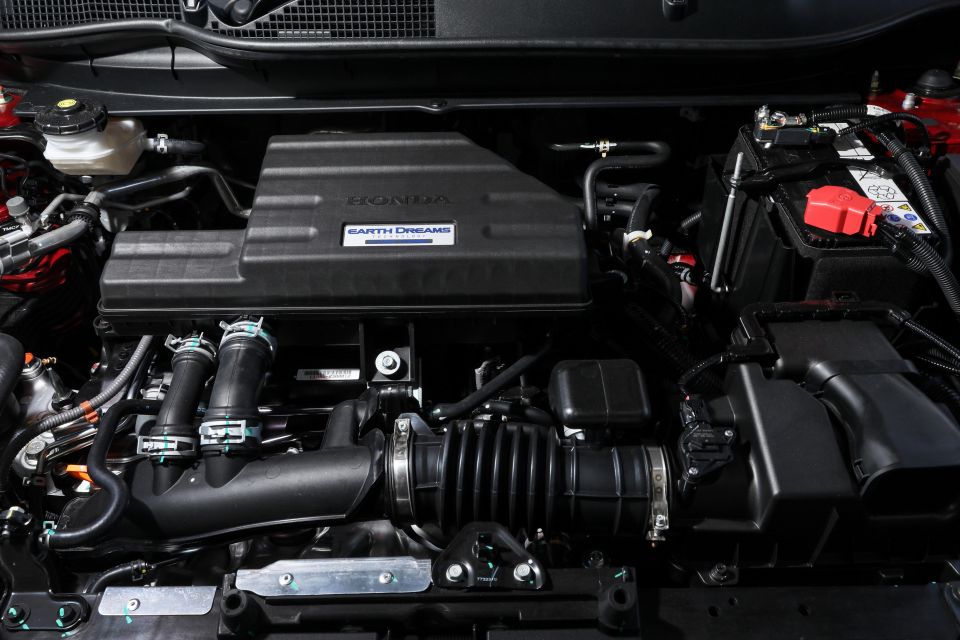
Although a naturally-aspirated 2.0-litre engine is available in the very base CR-V, the VTi L7 comes standard with a 1.5-litre turbocharged four-cylinder petrol engine.
Peak power is 140kW at 5600rpm, and maximum torque is 240Nm between 2000rpm and 5000rpm. As is the case across the range, the CR-V comes standard with a CVT.
Unlike the other CR-V models sitting atop the range, the VTi L7 isn’t all-wheel drive. Instead, it’s front-wheel drive. People who want seven seats tend not to want all-wheel drive, apparently.
Claimed fuel economy is 7.3L/100km on the combined cycle. It runs on 91 RON regular unleaded fuel and has a 57L fuel tank.
We saw 8.2L/100km in a week behind the wheel. The figure dropped to around 5.0L/100km on the highway, before climbing steadily to the 8.2 mark in the cut-and-thrust of city traffic.
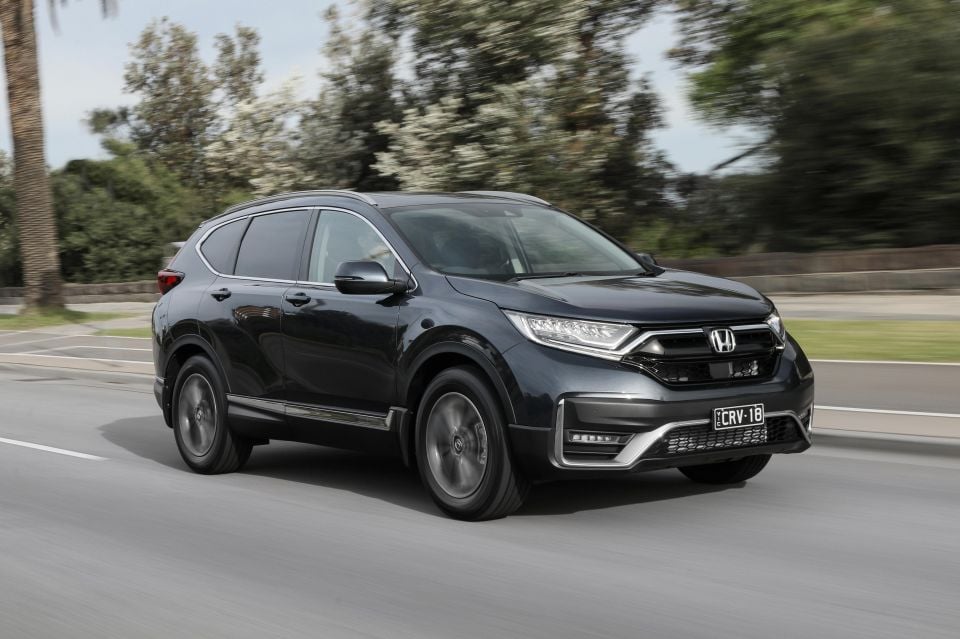
The CR-V might look a bit tall and boxy, but it drives like a smaller and lighter car.
The 1.5-litre turbocharged engine might have a small displacement, but its peak torque figure is healthy enough, and it comes on tap at just 2000rpm. That means it feels relatively effortless at city speeds, the CVT holding revs between 2000 and 2500rpm to keep the engine humming smoothly along.
It’s more responsive than you might expect, although the combination of a CVT and small-displacement turbo engine means it can take a second to gather itself and offer a proper shove in the back when you demand more.
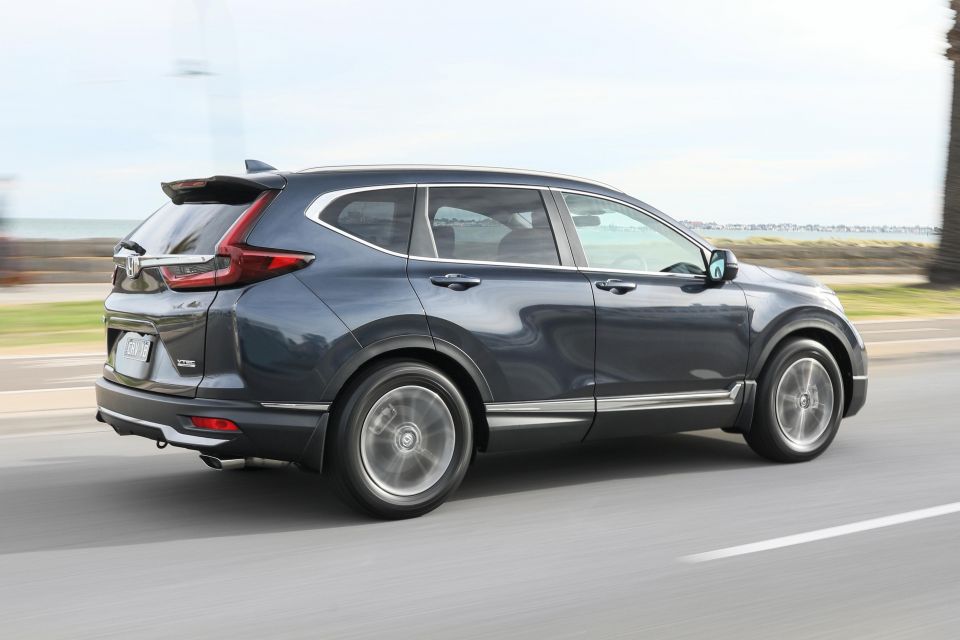
There’s hardly any engine noise in normal driving, and vibrations are kept in check from behind the wheel.
Honda offers all-wheel drive, but unless you’re often heading to the snow or along muddy fire trails to surf spots it’s not really necessary. Even on a wet, windy weekend the CR-V never broke traction, and the linear throttle calibration means you’re not going to accidentally overwhelm the tyres with an accidental spike of torque.
With tall windows and an upright body, the CR-V is one of the easier SUVs to place in tight city streets. The steering is light and fluid, and you get a reversing camera and parking sensors to help squeeze into smaller spaces.
The camera is fairly low-resolution and squeezed by the small central screen, which won’t impress tech-heads.
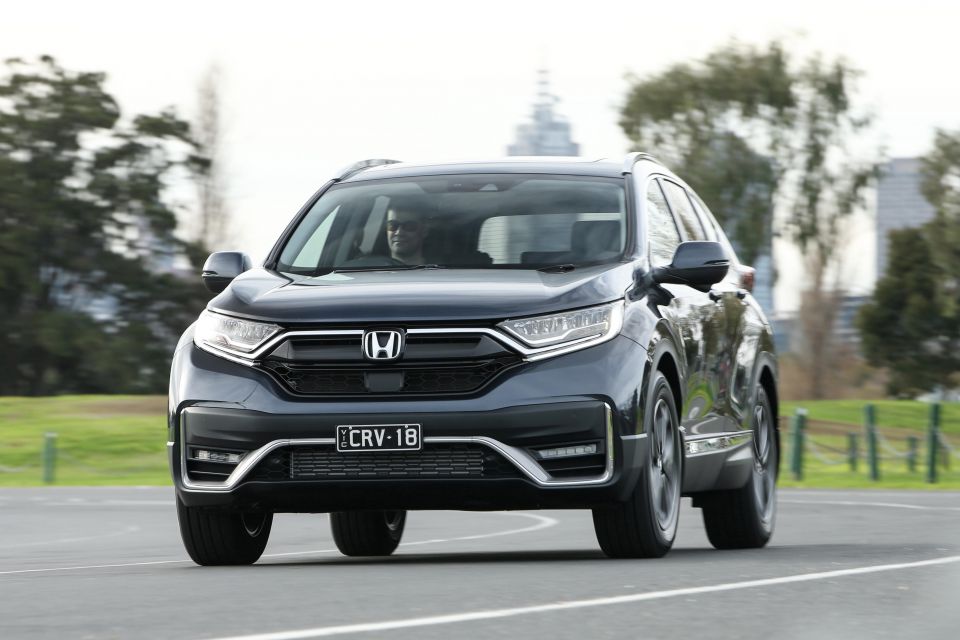
Honda has also done a good job keeping wind and road noise at bay, which makes for a serene cabin at highway speeds. With a smoothly-tuned adaptive cruise system and good lane-keeping assist, it’s an easy car to drive on family road trips.
Given the CR-V rides on 18-inch alloy wheels, the ride quality is impressive. It feels relaxed over city bumps and potholes, dealing with them without any unseemly bashing or crashing.
It also deals well with bigger dips or crests on the open road, brushing them off in one tight motion.
A few sportier SUVs could learn a thing or two about ride comfort from the CR-V, which manages to be comfortable without turning into a floaty barge.
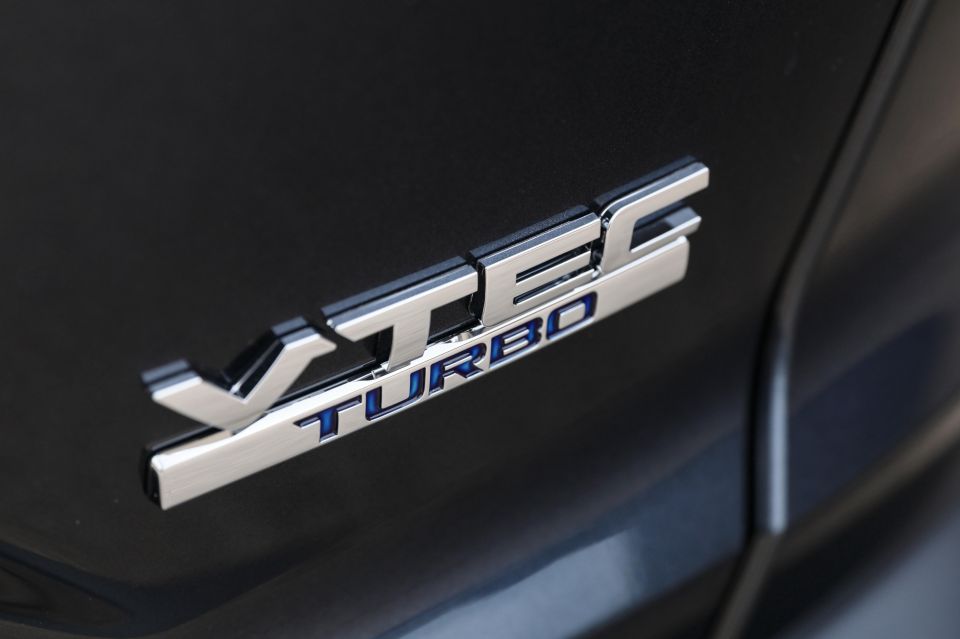
Honda’s move to agency sales coincided with a huge cut in service prices.
The first five services in the 2022 CR-V each cost $125, for a combined five-year or 50,000km service cost of just $635 – down from $1560 under the brand’s old capped-price service program.
The CR-V is backed by a five-year, unlimited-kilometre warranty.
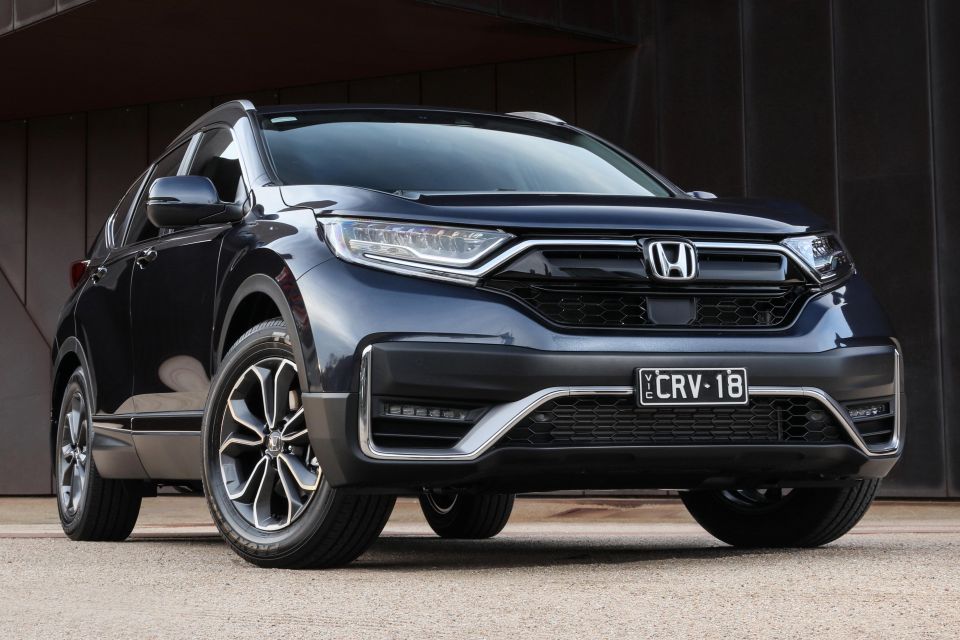
Where expert car reviews meet expert car buying – CarExpert gives you trusted advice, personalised service and real savings on your next new car.
Does the Honda CR-V deserve to sell in bigger numbers? It probably does.
Along with one of the most practical cabins in the mid-sized SUV space, the CR-V boasts a smooth and refined petrol engine. It’s also easy to drive in the city, and rides better than plenty of its rivals.
It’s a shame Honda’s in-cabin technology feels out-of-date, because it’s one of the only chinks in the CR-V’s armour.
As for the VTi L7? I can understand the appeal of having a pair of extra seats to play with, but don’t go in expecting them to be anything other than part-timers to be used in a pinch. It’s also a shame Honda holds DAB radio and auto-folding mirrors for the VTi LX AWD, because both really should be standard at just shy of $50,000 drive-away.
If that is what you want – a relatively well-specced five-seater that can be used to run the neighbours’ kids to the station once or twice a year – the CR-V is short on rivals, and ticks most of the boxes.
If you’re after something with a bit more space down back, it might be worth foregoing some of the nice trimmings from the VTi L7 and looking at a bigger, more basic Hyundai Santa Fe or Kia Sorento.
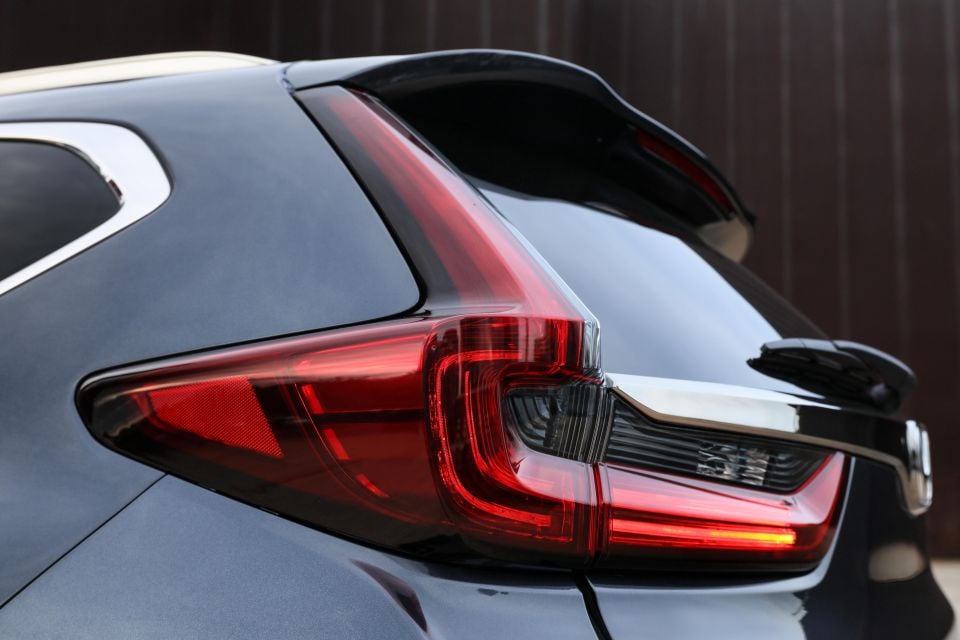
Click the images for the full gallery
MORE: Everything Honda CR-V
Where expert car reviews meet expert car buying – CarExpert gives you trusted advice, personalised service and real savings on your next new car.
Scott Collie is an automotive journalist based in Melbourne, Australia. Scott studied journalism at RMIT University and, after a lifelong obsession with everything automotive, started covering the car industry shortly afterwards. He has a passion for travel, and is an avid Melbourne Demons supporter.


Josh Nevett
2 Days Ago


Josh Nevett
4 Days Ago
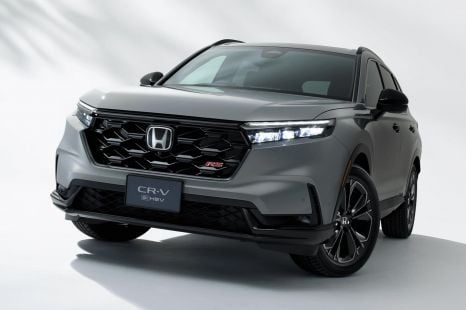

James Wong
6 Days Ago


Derek Fung
6 Days Ago


CarExpert.com.au
8 Days Ago
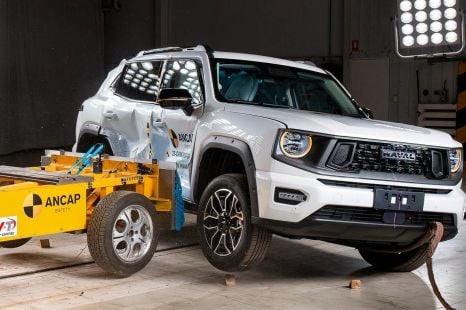

James Wong
9 Days Ago